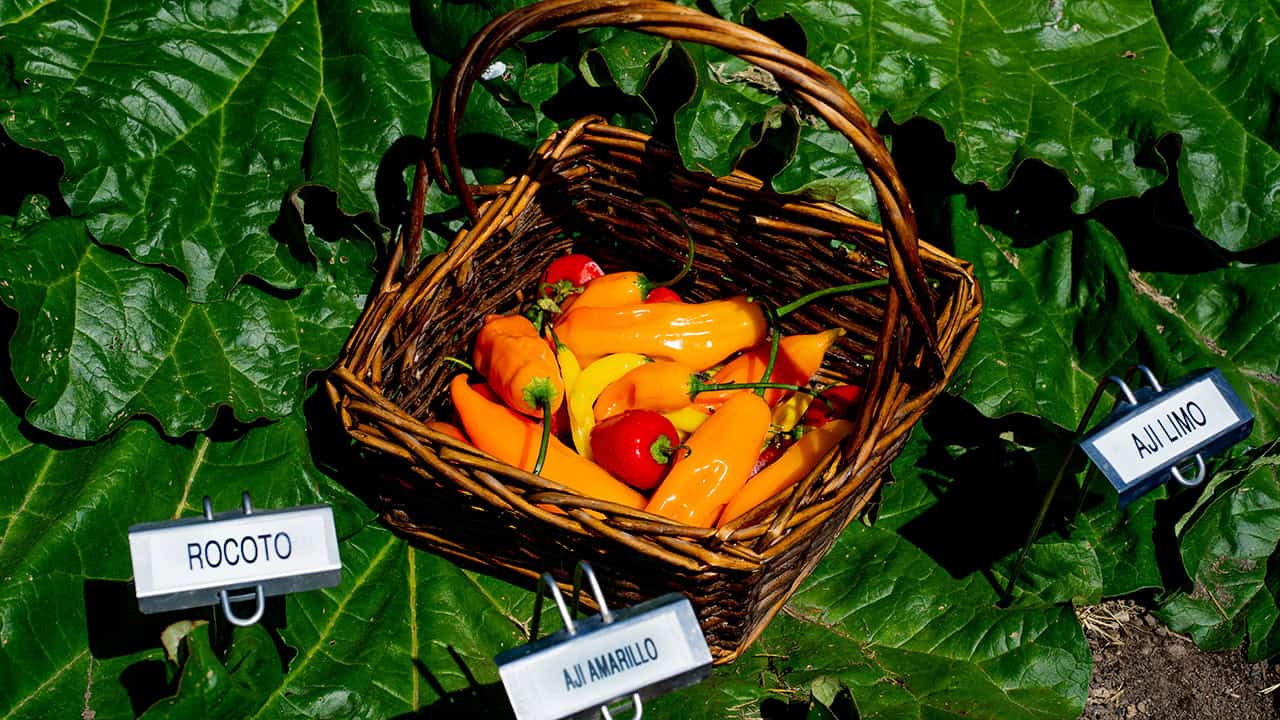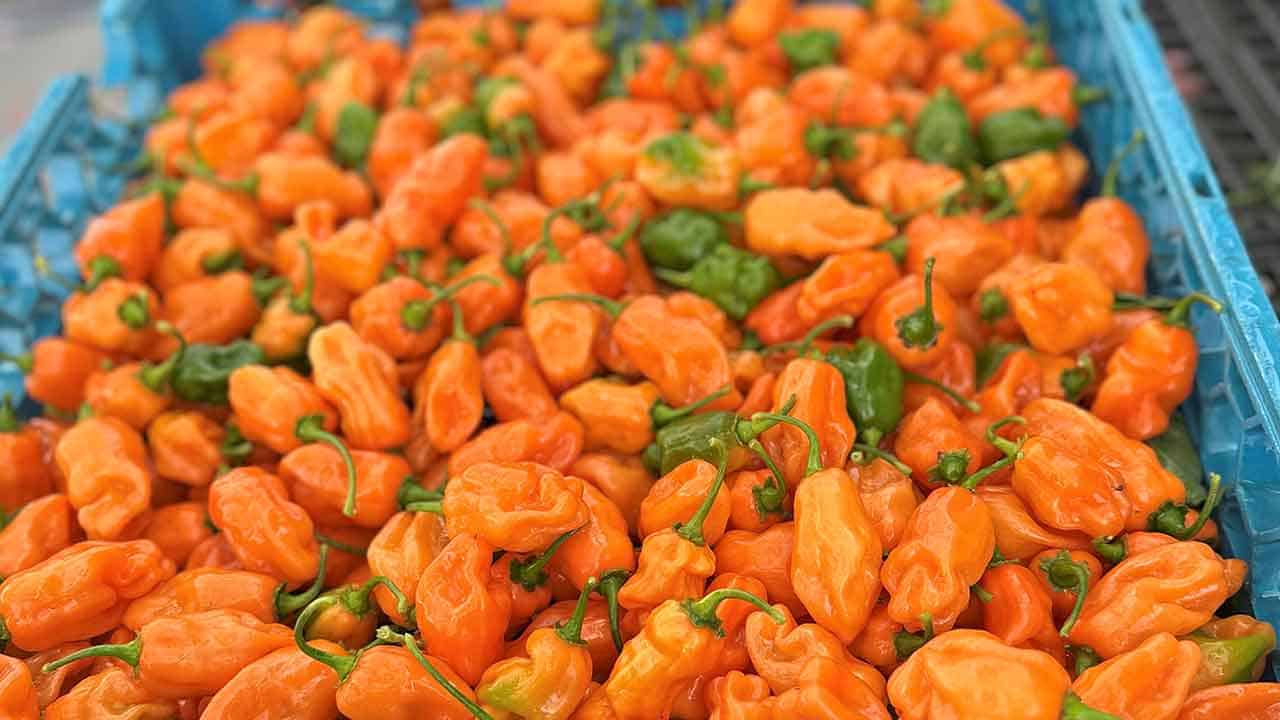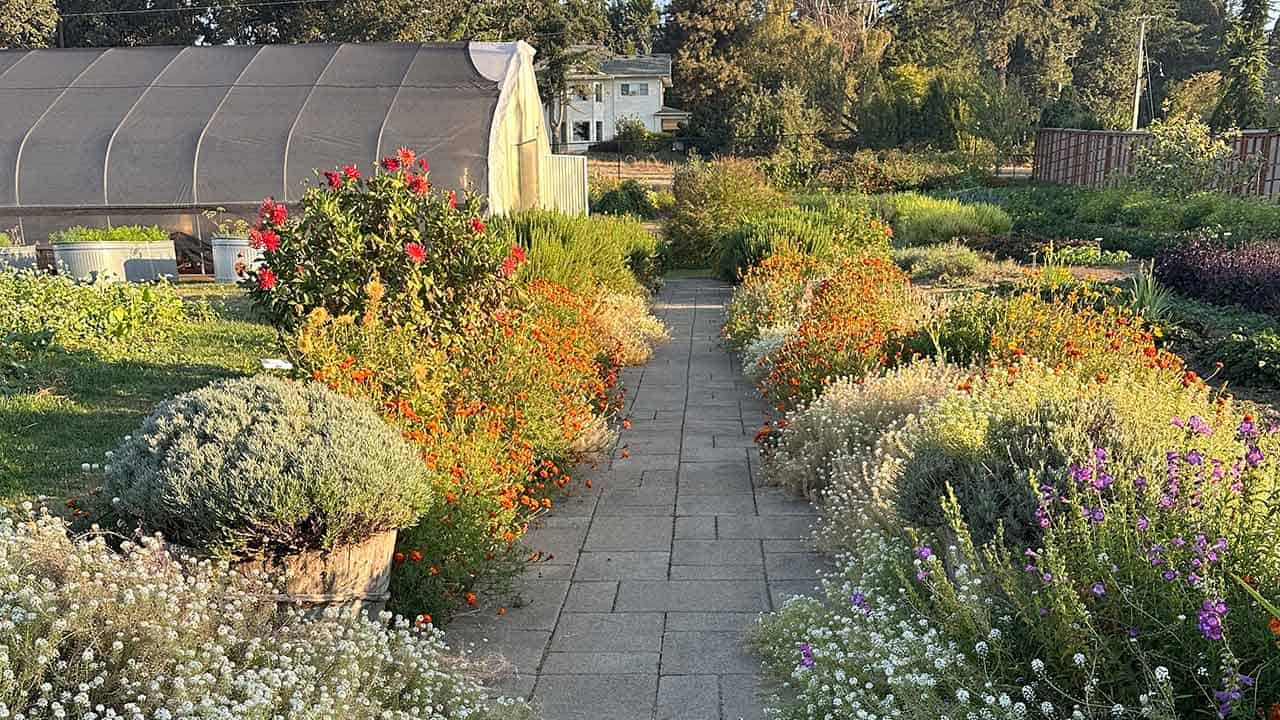It’s hard to believe that we have arrived in June. We have been busy as beavers getting various crops planted. We are almost finished with this round, and then our attention will turn to keeping weeds at bay from our newly planted vegetables.
Chef's Garden Peruvian Pepper Patch
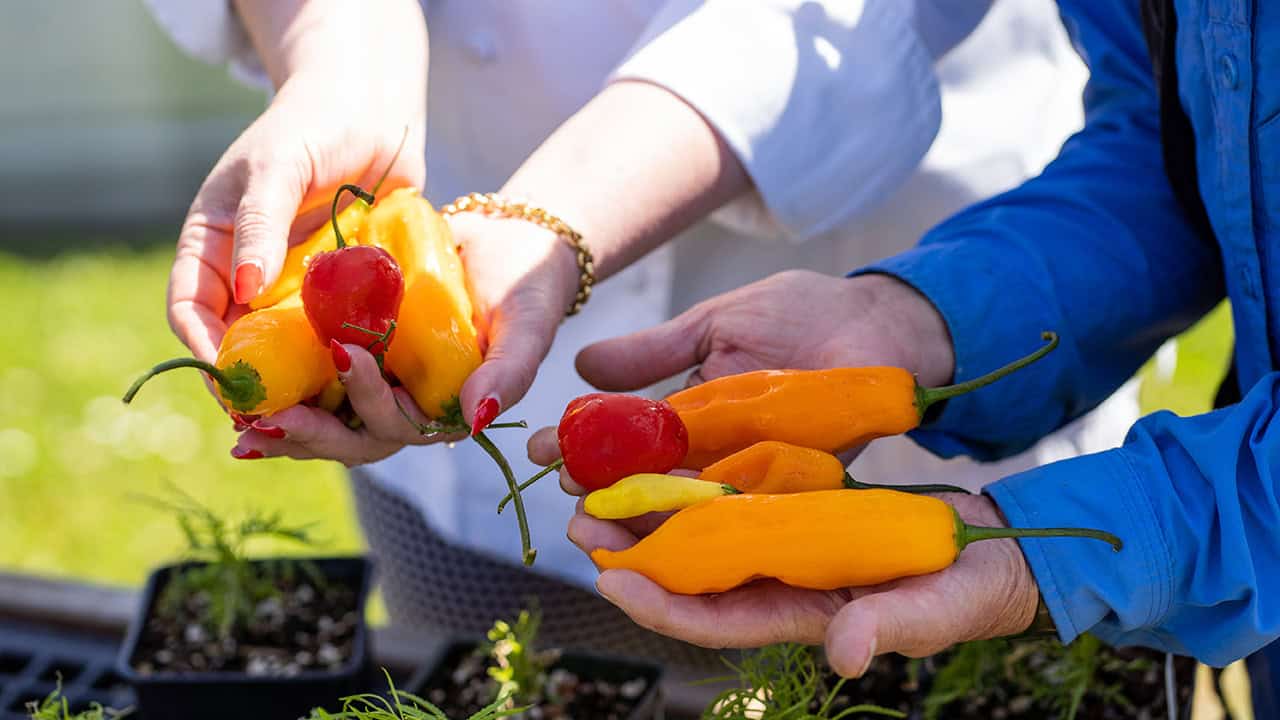
Our pepper patch includes three varieties of peppers, which we refer to as “Peruvian peppers.” We grew these peppers last year as well, and now we have the privilege of seeing how they are used in traditional Peruvian cuisine, thanks to guest chef Olenka Brandon, who is preparing a special dinner at The Allison on June 14. This is all because she froze some of last year’s harvest for use throughout the year.
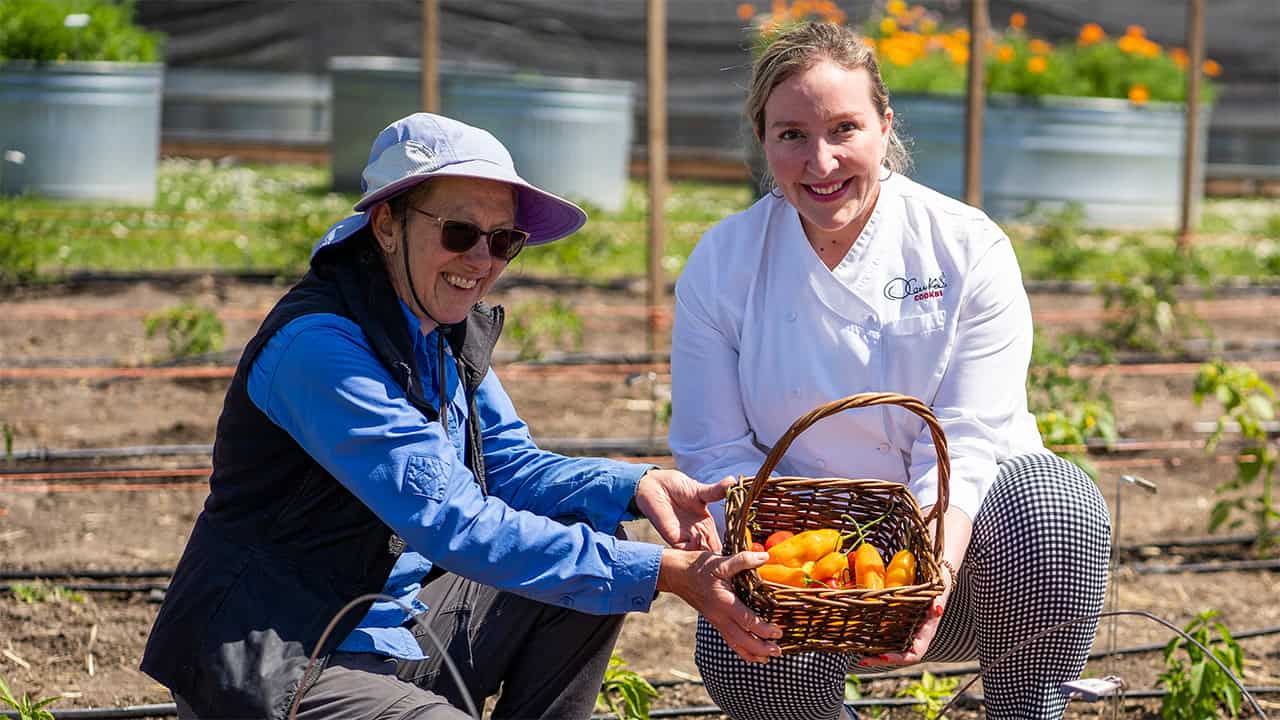
Aji Limo Chili Peppers (Lemon Drop Pepper)
The most prolific pepper growing in our Chef’s Garden is a small yellow pepper called Aji Limo. They are sometimes sold in the U.S. as lemon drop peppers. They are hot (Scoville 30,000-50,000). The Scoville, named after its developer Wilber Scoville, refers to a scale that measures the spiciness or heat of chili peppers and other spicy foods. The higher the number, the hotter the pepper!
Aji Amarillo: Peruvian Yellow Chili Pepper
The next pepper is the Aji Amarillo (Peruvian Chile). It matures into a lovely golden orange. The Aji Amarillo Pepper is larger, about 4 – 5 inches long, and 1-2 inches wide at the stem end. Again, its Scoville score is between 30,000 and 50,000. It was less prolific than the Aji Limo.
Rocoto Pepper
The final pepper is Rocoto. It is a small blocky pepper that takes a long, long time to mature to red. Its Scoville score ranges from 30,000 to 100,000!
Planting & Harvesting the Peppers
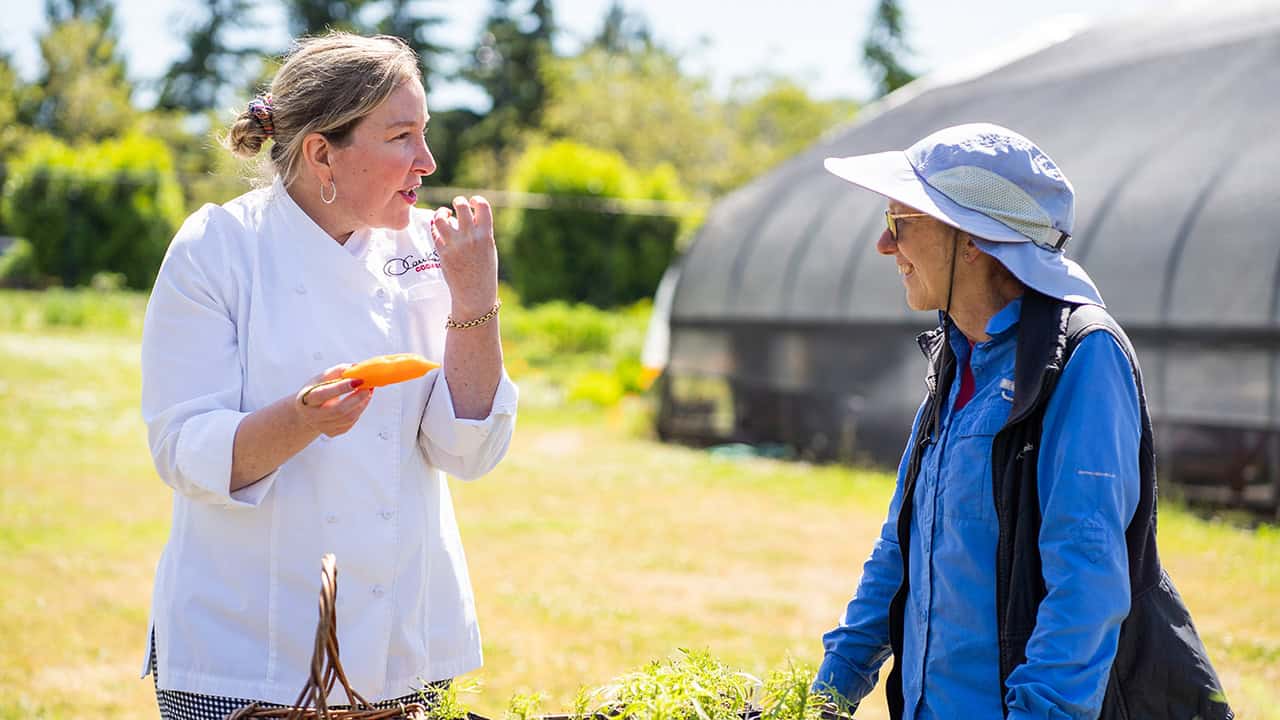
Last year, I treated these peppers like the rest of the peppers and harvested fruit late in the season. It turns out they need more time and heat than we typically have here. So, this year, we started them a month earlier, and now they are planted outside using red plastic mulch. This is supposed to increase production and encourage ripening. We covered them with a lightweight row cover to increase the temperature. Our growing techniques are all experiments to find the most consistent and reliable way of growing them many miles from their homeland.
Huacatay (Peruvian Black Mint)
We are also growing huacatay, or Peruvian black mint, another staple in Peruvian cuisine. Last year, the seed we purchased did not germinate. This year, we changed seed companies and had good germination. We will be planting them in the ground this coming week.
Seeds
We purchased all these atypical seeds from True Love Seeds, a “farm-based seed company offering culturally important and open-pollinated vegetable, herb, and flower seeds.”
Come to the garden to see what other unusual vegetables we are growing!
-Anna
Photos by Maximilien Ratthe, employee of The Allison.

olenkacooks the cuisine of peru
june 14 @ 6:00 pm - 9:00 pm
Join us for this one-of-a-kind evening filled with pure delight experienced through the food, the conversation, and celebration of culture!

